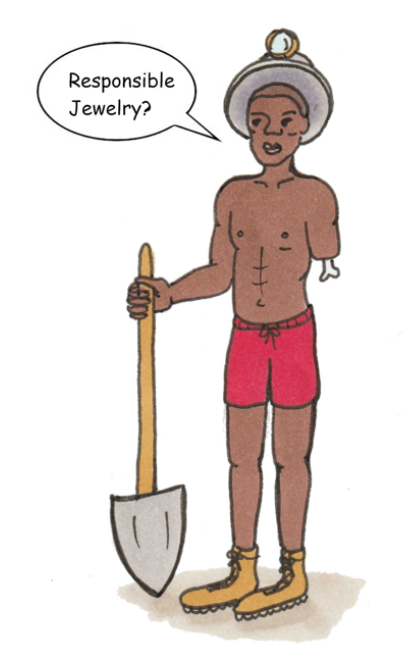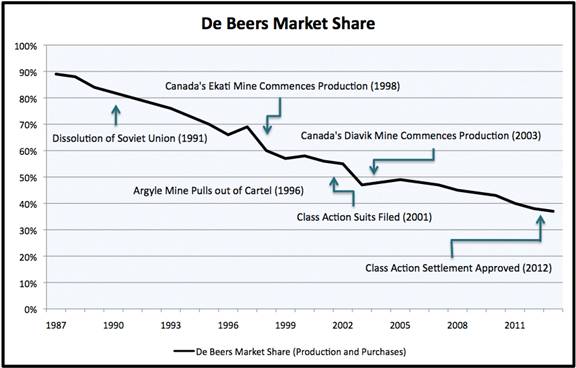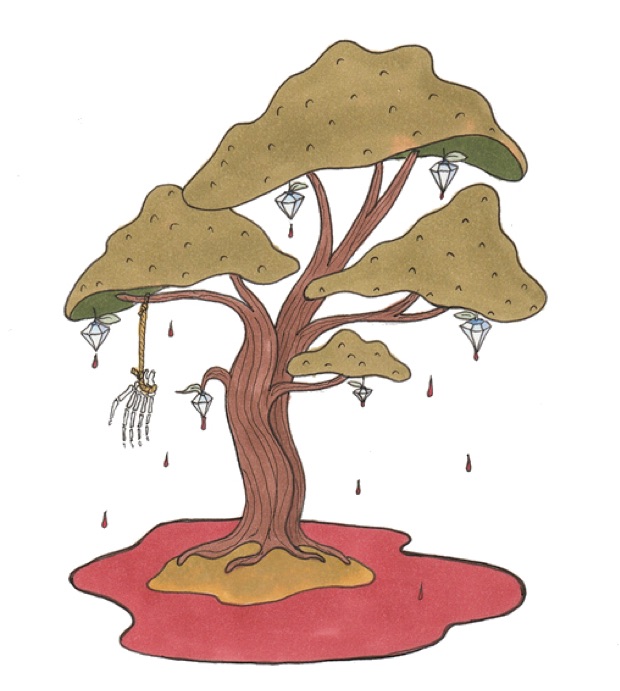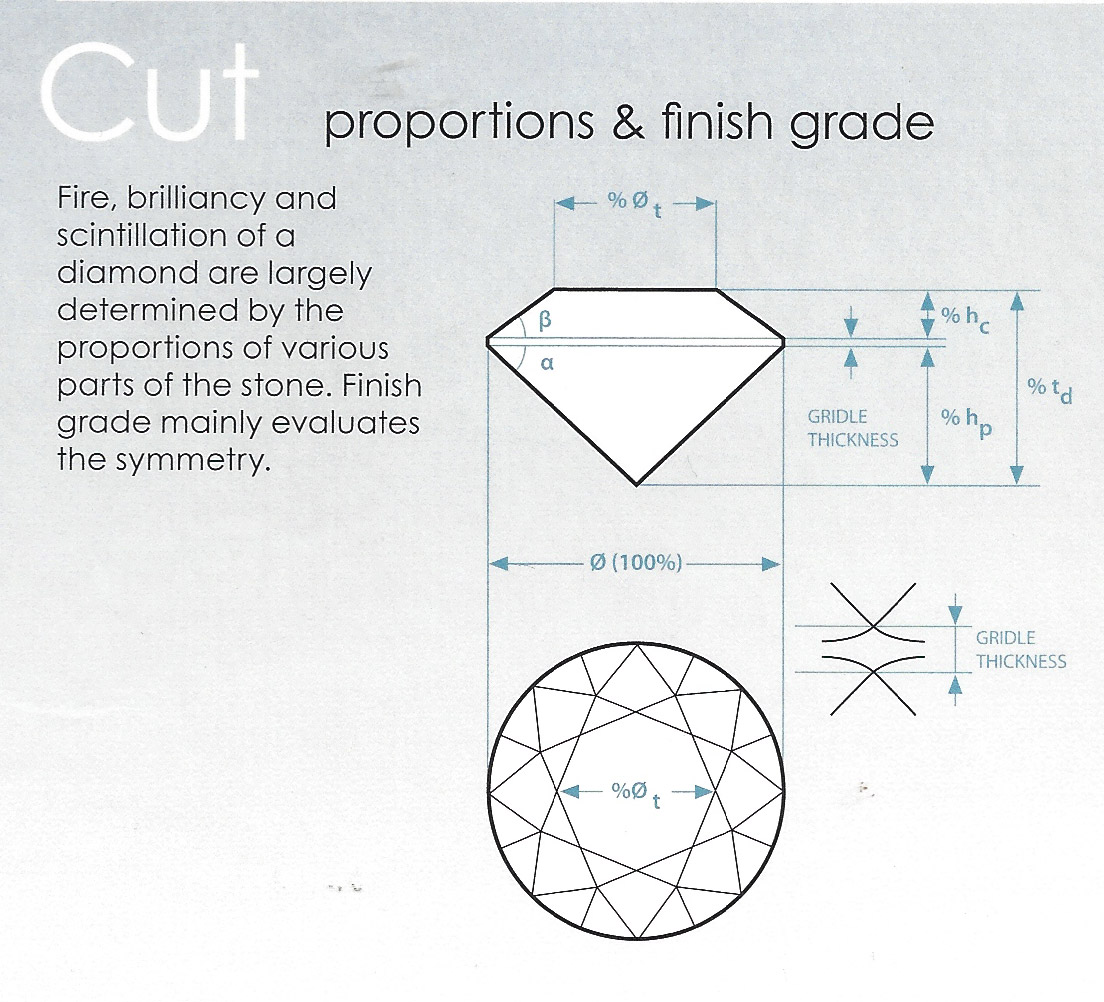If you are looking for information on purchasing diamonds that you will not find anywhere else, you’ve come to the right place!
Jewelers typically cover what's known as the "Four C's": Color, Clarity, Cut, and Carat. But two other C's are also critical: Certification and Conscience.
To help you with price comparisons, I’ll tell you which Certifications are more rigorous than others.
But most important of all is the sixth C, Conscience (otherwise known as "ethics") in diamond sourcing — which is my expertise.
A diamond, especially on an engagement ring, symbolizes one's most cherished and noble sentiments. Sourcing needs to align with your values — which is why for us, Conscience is the first “C."
I have been a jeweler and activist for 26 years. I am a feature writer on ethical jewelry issues for Canada’s top trade magazine, and I am one of the jewelers who pioneered the North American ethical jewelry movement back in the mid-2000s.
Every jeweler today claims to be ethical and sells “conflict free diamonds.”
But the sad truth is: “ethical” and “conflict free diamonds” are essentially meaningless terms. Still, cutting through the spin is nearly impossible.
Conscience

Lab grown, Botswana, Canadian, recycled: which is the diamond that does the greatest good in context to social justice and past atrocities?
The answer to that question is: none of the above.
But to understand why, here’s a bit of background info:
The ideal ethical diamond would have a fair trade certification, and come from a small diamond mining community. Today, there are a few million small-scale diamond miners working in extreme poverty to produce about 20% of the world's global diamond supply. Their lives have not changed one bit in recent years, despite all the talk about ethical diamonds.
To understand why, here's a bit of history:
During the 1980s and into the ‘90s, De Beers controlled almost 90% of the world’s diamond supply chain.

Source: WWW International Diamond Consultants Ltd, Economic Times of India, and Paul Zimnisky analysis.
De Beers did not have mining operations in many of the countries producing conflict diamonds, so they hired paramilitary groups right out of South African Apartheid to purchase diamonds.
An estimated 3.7 million were killed in wars funded by the diamond sector. When Global Witness broke the story in the late ‘90s, De Beers saw a marketing opportunity, “making controversy into a virtue,” as described in this New York Times article.
The focus of "ethics" became transparency and tracability to source, and since De Beers already owned diamond mines, all they had to do was continue to source from them to become "ethical."
But what about all those "conflict diamond" areas where they had been sourcing from?
The Kimberley Process Certification Scheme, developed between 2000 and 2003, created a “conflict free” diamond standard. However, in my interview with Ian Smillie, one of the main architects of the Kimberley Process, we see that accountability and restitution to impacted communities was a non-starter.
In other words, "civil society" institutions allowed the diamond sector to get away with murder in exchange for a new certification system to prevent so-called "conflict" diamonds.
In his seminal 2014 article, “The Case For Reparations,” which was published in The Atlantic, Ta-Nehisi Coates wrote of a “…strange and powerful belief that if you stab a Black person 10 times, the bleeding stops and the healing begins the moment the assailant drops the knife.” There is this sense that if we ignore the issue, and don’t look, it will go away.

From a historical perspective, diamonds are a kind of "strange fruit."
Here’s what you need to keep in mind:
The Kimberley Process, which forms the basis of the “conflict free” narrative is widely regarded as ineffective. It was widely denouced in 2011 when Zimbabwe's conflict diamonds became certified as "conflict free." Global Witness and even Ian Smillie denounced the system.
But that didn't matter.
For the diamond industry, it is only about $$$ and sell, sell sell. So, in its function as an appeasement to consumers, the Kimberley Process is also 100% effective.
Let’s not mince words:
The Kimberley Process is a cover up that allows consumers to buy diamonds without worrying about ethics. The “conflict free” narrative is today more powerful than ever as a cover up for atrocities.
An ethical diamond would be based on fair trade principles, and would benefit the small-scale miners who were impacted by these atrocities and who continue to work for a few dollars a day.
But this diamond does not exist. And, the one project that could make bring this diamond to market will not do so.
Back in 2007, the Diamond Development Initiative was started to create a fair trade diamond. Yet today, none of these diamonds have come to the market branded under Maendeleo Diamond Standard-- these diamonds are purchased exclusively by De Beers. They are "studying" the market viability of these diamonds--- even though the that viability was established back in a 2007 in a study by Fairtrade USA.
It's obvious that key players in the diamond trade do not want a fair trade diamond to come to the market— a situation I describe in my piece, Death of the Fairtrade Diamond. Though the Diamond Development Project does have an undeniable benefit, the project does impacts less 10,000 small scale diamond miners out of the 1.5 million. It is totally unscalable and is mainly used as a positive publicity generated by numerous large players in the jewelry sector who want to show the world how much they care without impacting their market.
Ethical jewelers are quite skilled in spinning ethical diamond issues.
Nearly every jeweler in the jewelry sector continue to market their “conflict free diamonds,” a term that should be ripped down like monuments of confederate generals.
Kill millions and then move on and ignore it? The term “conflict free diamonds” = Black African lives don’t matter.
Which Diamond is Best for Ethics or Conscience?
Now, back to the original question: since we cannot use our purchase to benefit small-scale miners, what we are left with is basically four options:
- Newly Mined Diamonds purchased on the open market
- Recycled Diamonds
- Canadian Diamonds
- Lab Grown Diamonds
Each of these choices has its pros and cons. For a useful breakdown, read this article which is a companion to this piece.
Below is my take on the five remaining “C’s”.
Color — aka "Colour" ;)

Diamonds come in several colors. Most people are looking for a pure white, which are rare and more expensive. The rest contain traces of gaseous elements, often nitrogen, trapped inside the carbon. This causes brownish or yellow coloration that can range from barely visible to outright impairing. Some people find the whiter diamonds too stark and wan, not nearly warm enough. Brownish diamonds, branded as “cognac” are still quite beautiful and less expensive.
Millions of carats of diamonds are mined every year and grown in labs every year—the vast majority of which end up being used for industrial purposes. In context to diamonds used in rings, diamond color is graded with letters according to its whiteness. The highest letter is “D.” Grades of 'F' and above (aka F, E, and D) are rare, and demand a premium price because they are the mostly white. Any diamond that is ‘G,' or even ‘H,' is still so white that it takes training to actually notice color.
We recommend color in the 'G' to 'H' range, which we feel represents the best value for your money. However, should you wish to have a whiter diamond, we are more than happy to make accommodations for you.
Clarity

Diamonds are graded with numbers and letters that describe the level of inclusion in the stone—“inclusions” meaning imperfections. VVS1 means "very very slight" inclusion. VVS2 means slightly more inclusions than VVS1. Beyond this you have VS1 and then VS2, each with slightly more inclusions. If you end up with I3, inclusion level 3, you're getting a diamond that is not really a quality gem for a wedding ring.
We recommend SI1, slight inclusion level 1, or better. SI1 have inclusions that are not easily visible to the naked eye. In the trade, this is called 'eye clean'. Though we can source higher grade diamonds, the SI1 category represents to us, the best overall value to our customers.
Cut

While the first three C's mentioned so far were determined by a rough diamond that comes out of natural sources such as a river, ocean, or mine, how that diamond is actually transformed into a sparkling gem is determined by the cut. Cut is absolutely critical and there is no need for expertise to recognize that some cuts are better than others.
Every diamond has three sections. The "pavilion" is the bottom of the diamond. The "girdle" is the thin middle section, which sits between the pavilion and the top part of the diamond, which is known as the "crown". The crown is where the facets are cut to reflect and refract the light.
The objective for the cutter is to cut and polish a diamond so that it has ideal proportion and symmetry, in order to maximize the “brilliance." Brilliance refers to how intensely light comes or "dances" from out of the diamond as you view it. "Scintillation" refers to the sparkle, or how much the diamond glitters.
We recommend and provide "good" to "excellent" cuts. We feel that these categories provide the best value for our customers. However, we are more than happy to provide any cut that is available.
Carat Weight

Of all the C's, the carat weight is the most straightforward and easy to understand. A carat is a fifth of a gram. We can source diamonds of all carat weights, depending upon your preference.
Certification
Diamonds are often sold with third party certification papers from diamond grading labs. Such as the Gemological Institute of America (GIA) and European Gemological Laboratories (EGL). With these certifications you know what you are getting. Certification is helpful to consumers because it allows some objective comparison.
However, insiders in the jewelry business know that some labs are "softer" in their grading than others. This has huge financial ramifications. EGL Certification is not necessarily equal to certifications from the GIA, which makes using online comparisons not entirely trustworthy. We recommend GIA certification.
*All illustrations from HRD Antwerp Institute of Gemology.
Marc Choyt is president of Reflective Jewelry, a designer jewelry company founded in 1995. He pioneered the ethical sourcing movement in North America and is also the only certified Fairtrade Gold jeweler in the United States. Choyt’s company was named Santa Fe New Mexico’s Green Business of the Year in 2019, and he has been honored with several awards for his efforts to support ethical jewelry. His ebook, Ethical Jewelry Exposé: Lies, Damn Lies and Conflict Free Diamonds, is available online. Choyt can be reached on Twitter at @Circlemanifesto or by email at marc(at)reflectivejewelry.com.